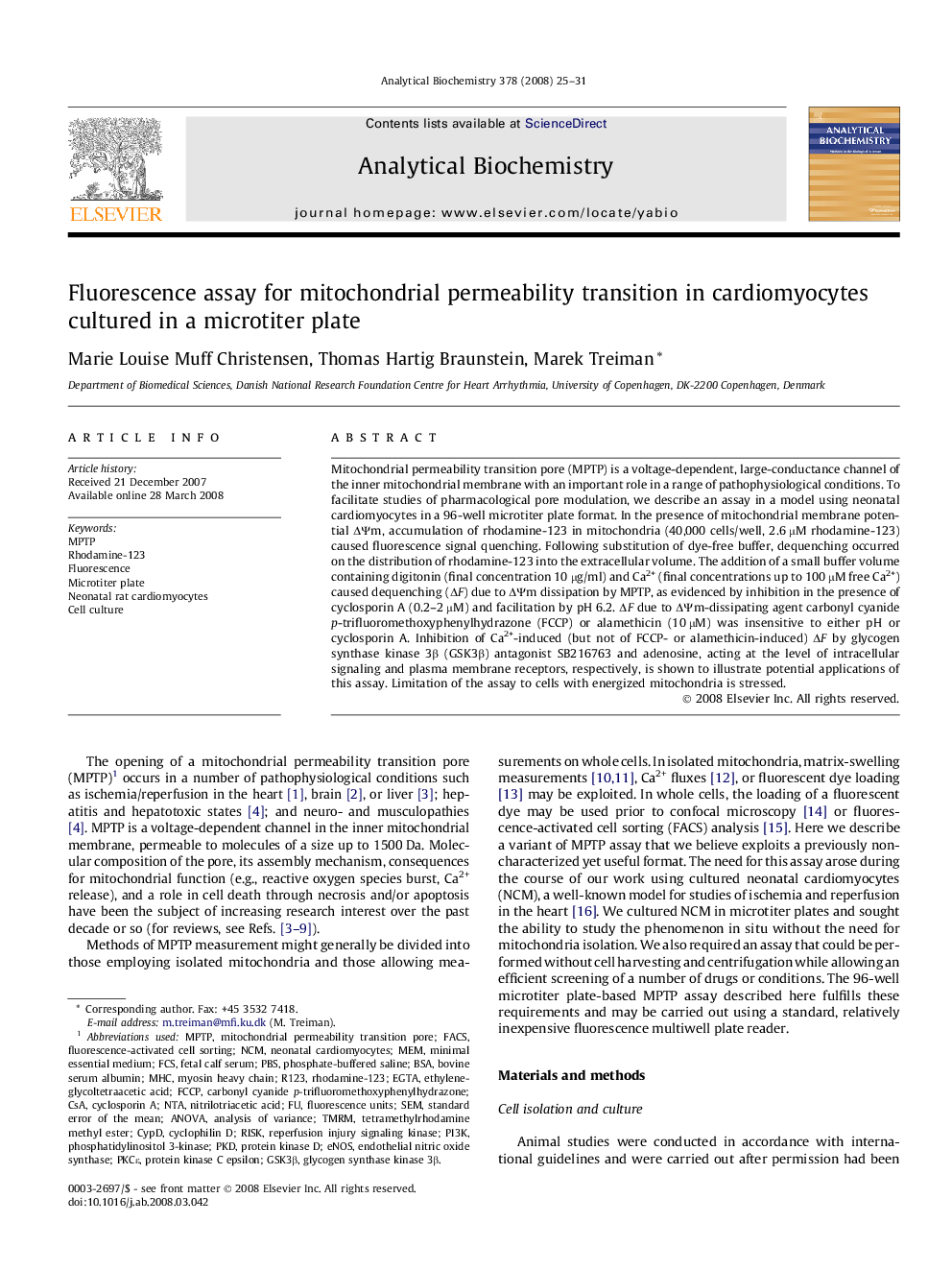| Article ID | Journal | Published Year | Pages | File Type |
|---|---|---|---|---|
| 1174745 | Analytical Biochemistry | 2008 | 7 Pages |
Mitochondrial permeability transition pore (MPTP) is a voltage-dependent, large-conductance channel of the inner mitochondrial membrane with an important role in a range of pathophysiological conditions. To facilitate studies of pharmacological pore modulation, we describe an assay in a model using neonatal cardiomyocytes in a 96-well microtiter plate format. In the presence of mitochondrial membrane potential ΔΨm, accumulation of rhodamine-123 in mitochondria (40,000 cells/well, 2.6 μM rhodamine-123) caused fluorescence signal quenching. Following substitution of dye-free buffer, dequenching occurred on the distribution of rhodamine-123 into the extracellular volume. The addition of a small buffer volume containing digitonin (final concentration 10 μg/ml) and Ca2+ (final concentrations up to 100 μM free Ca2+) caused dequenching (ΔF) due to ΔΨm dissipation by MPTP, as evidenced by inhibition in the presence of cyclosporin A (0.2–2 μM) and facilitation by pH 6.2. ΔF due to ΔΨm-dissipating agent carbonyl cyanide p-trifluoromethoxyphenylhydrazone (FCCP) or alamethicin (10 μM) was insensitive to either pH or cyclosporin A. Inhibition of Ca2+-induced (but not of FCCP- or alamethicin-induced) ΔF by glycogen synthase kinase 3β (GSK3β) antagonist SB216763 and adenosine, acting at the level of intracellular signaling and plasma membrane receptors, respectively, is shown to illustrate potential applications of this assay. Limitation of the assay to cells with energized mitochondria is stressed.
